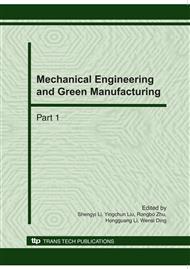p.1351
p.1355
p.1360
p.1365
p.1369
p.1374
p.1379
p.1383
p.1388
Mechanism of Early Cracking and Serviceability of Precast Reinforced Concrete Bridge Deck Slabs
Abstract:
In the light of the mechanism of early cracking in a batch of precast reinforced concrete hollow slabs of four certain bridges in construction whose midspan appears transverse cracks, investigation ranging from method of construction to distribution of cracks are conducted in situ. The possibility of the occurrence of cracks is discussed in detail. Theoretical calculation as well as numerical analysis reveals that the main reason of formation early cracking in slabs is self-weight loading. In order to assess the performance of the bridge deck system which appears cracks and evaluate the effect of early cracking on structural behavior, numerical analysis is performed to conclude that the bridge deck is satisfied with the serviceability requirements. In view of the fact that this kind of slab is widely used in bridge projects for convenience in construction and advantage in cost, effective and economical crack control measurement and technical proposal are recommended with regard to the design, construction and amendment of design specifications.
Info:
Periodical:
Pages:
1369-1373
Citation:
Online since:
October 2010
Authors:
Keywords:
Price:
Сopyright:
© 2010 Trans Tech Publications Ltd. All Rights Reserved
Share:
Citation:


